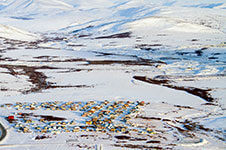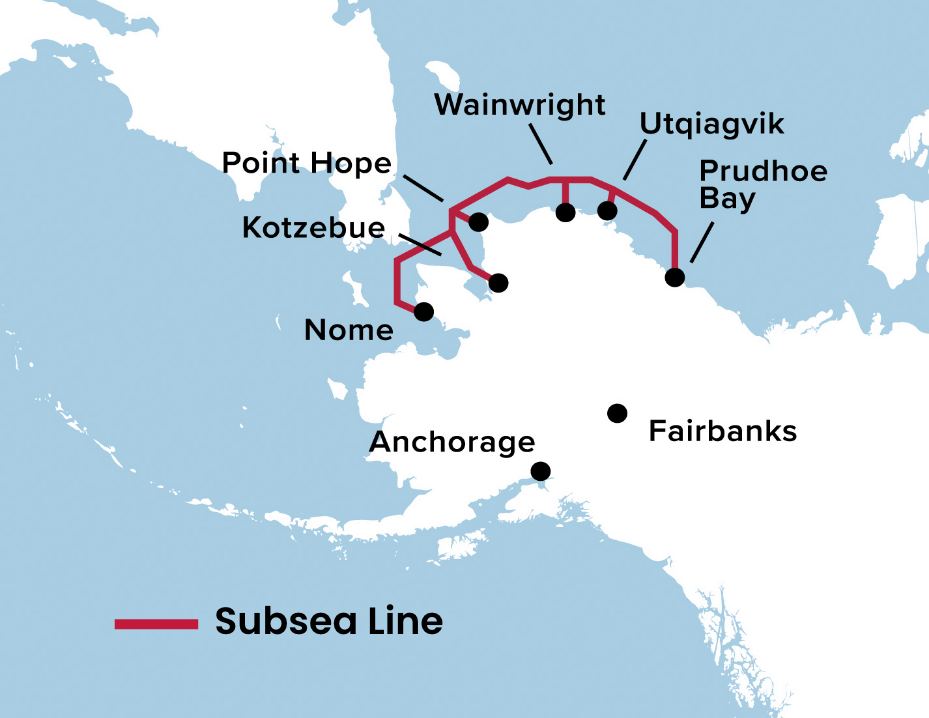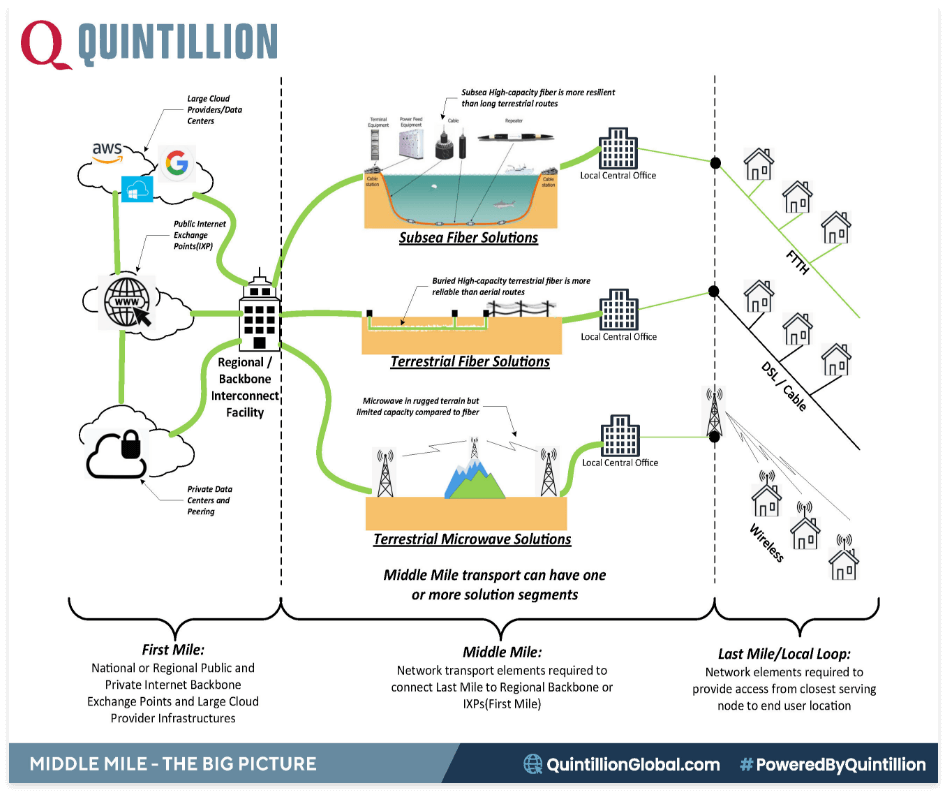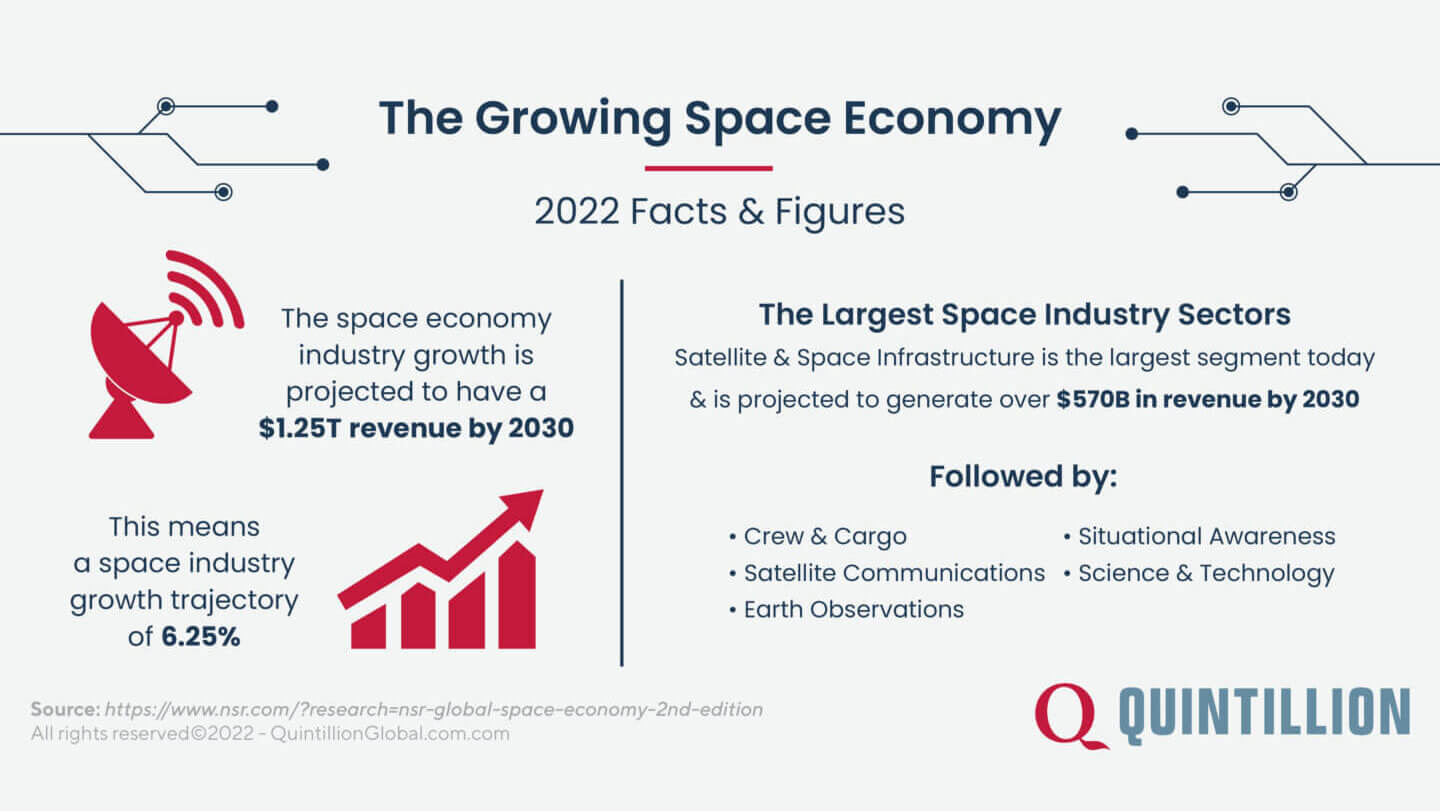
Resources
Knowledge Hub
FAQs
What is your mission?
Quintillion’s mission is to connect more Alaskans to each other and the rest of the world through our fiber-based broadband network. Quintillion’s Arctic broadband network can boost connectivity and cloud services for business, government, military, and satellite ground station operations.
Our goal is to make Alaska the American bridge between Asia and Europe—to provide the shortest route between the three continents, and the fastest connection on the planet. Our high-capacity, low-latency Arctic fiber network can help capture data from space through polar orbiting satellites.
By 2025, we will have connected most rural Alaskans to each other and the rest of the world. Not only will we connect three continents, but we will also lead the Arctic connection to space through a high-latitude data acquisition site on American soil.
In short: In Alaska, Out from Alaska, and Up from Alaska.
Whom do you serve?
Quintillion currently serves Alaskans on the Seward Peninsula, in the Northwest Arctic, and on the North Slope—specifically, schools, hospitals, libraries, small businesses, oil and gas infield operations, cellular phone operators, and families.
We have fiber cable landing stations in Nome, Kotzebue, Point Hope, Wainwright, Utqiaġvik, and Prudhoe Bay. We provide wholesale broadband network capacity to phone and cable operators in the regions.
Our in-state partners are Arctic Slope Telephone Association Cooperative (ASTAC), Alaska Communications (ACS), GCI, Leonardo DRS, Arctic Slope Regional Corporation (ASRC), Telalaska, and Atlas Space operations.
Why is broadband so expensive in Alaska?
Telecommunications infrastructure is optimized when more people are concentrated in smaller areas. The fact that Alaska is geographically vast with a relatively small population makes the economics challenging.
Capital costs associated with building infrastructure is 5 to 10 times more costly in Alaska than in the Lower 48.
Ongoing maintenance costs are also exponentially higher in rural areas due to lack of logistical support (i.e. roads), shipping costs, and weather conditions. Arctic systems require not only a more hardened system, but also more rigorous operations and maintenance routines than other climates.
Who owns Quintillion?
Various Alaska Native Corporations, individual Alaskans, and Cooper Investment Partners (a New York based private equity firm). Quintillion employees also have an ownership interest.
Your former CEO was convicted of fraud. What happened?
The criminal behavior was identified in 2017, reported to the US Department of Justice, and prosecuted. In the past four years, Quintillion has hired a new leadership team, rectified and renegotiated contracts, and is rebuilding trust through transparency and accountability.
What are the company’s top three accomplishments to date?
In December 2017, we completed Phase 1: building the Alaska-based network from Nome to Prudhoe Bay and down to the Lower 48. The network has been up and running for nearly four years.
Since early 2018, Quintillion’s growth has been funded with cash flow from operations, not requiring any additional investments.
In early 2021, Quintillion established the high-latitude ground station in Utqiaġvik, which is a prime location for polar-orbiting satellites to downlink important data, such as earth observation imagery, remote sensing, and climate management data. This is a unique installation, as it is the only ground station on the planet to boast high-latitude fiber connectivity on American soil.
What is a fiber optic broadband cable and network?
A fiber optic cable is comprised of thin strands of glass, known as optical fibers, which transmit information from one point to another using optical technology. Data is transferred at nearly the speed of light, offering users unrivaled internet access and connectivity. A fiber optic cable network is the integration of several fiber optic cables across vast distances, bringing high-speed access to consumers wherever they may be.
What makes fiber optic broadband the gold standard?
Cost, reliability, and speed. The cost to construct a world-class fiber optic network like Quintillion’s is great but offers great savings to customers. Because our system is protected by copper and steel cladding, the cost to maintain the network is lower than other internet access systems, and is protected against Alaska’s harsh environments. Therefore, Quintillion can offer broadband on a resilient system at lower costs to consumers.
What kind of services does Quintillion provide?
Quintillion provides middle-mile backhaul services for last-mile service providers (such as Alaska Communications, TelAlaska, and ASTAC) along the Dalton Highway, the North Slope, and northwest Alaska. As a middle-mile service provider, we do not provide internet access services directly to the public. We specialize in providing internet service providers with the fastest, most resilient broadband access in the state of Alaska, which they in turn pass on to their customers.
Where does Quintillion plan to go in the future?
Our plans to connect Alaska to international markets in Japan and Europe are in the planning phase. Quintillion’s planned fiber optic network expansion will connect Japan to the Olympic Peninsula in Washington state, and Alaska to Europe via the Northwest Passage in northern Canada. In addition to bringing international connectivity to Alaska, we are finalizing our plans to build a state-of-the-art data center to service residents, oil and gas operators, environmental monitoring firms, and the Department of Defense.
Does Quintillion plan on serving other parts of Alaska?
Although we do not have immediate plans to extend our services to other parts of Alaska, we are always exploring opportunities to expand our network and better serve Alaskans.
Can I purchase internet services from Quintillion?
Quintillion does not offer internet services directly to consumers at this time, but if you’re interested in the fastest, most reliable internet service in the state of Alaska, speak with your local internet service provider about using our fiber optic cable system.
The 3 Main Types of Internet Service
Fiber Optic
Thin, flexible fibers with a glass core through which light signals can be sent with very little loss of strength.
Land-Based Microwave
The transmission of information by microwave radio wave.
Satellite
A type of data transmission that uses satellites launched in Earth’s orbit to provide internet service.
Essential Telecom Terms
Bandwidth
How much of the physical circuit’s capacity can be used to transmit data in a given amount of time.
Cable Landing Station
The electronic communications facility where the subsea fiber connects on shore.
Capacity
Also known as backhaul or transport; the maximum amount of traffic available over a certain type of technology.
Construction Costs
The one-time costs to construct broadband facilities.
Download Speed
The rate at which data is transferred from the web server to a personal computer.
Last Mile
The final segment of the internet; the side streets and neighborhoods to the end user’s location.
Latency
A time measurement tracking the delay before the transfer of data begins.
Maintenance Costs
Ongoing costs to maintain broadband facilities.
Middle Mile
The regional backbone for internet services in a particular area; the highway or freeway of the internet exchange.
Service Provider
A company that provides its subscribers access to the internet.
Upload Speed
The rate at which data gets transferred from a personal computer to the web server.
























